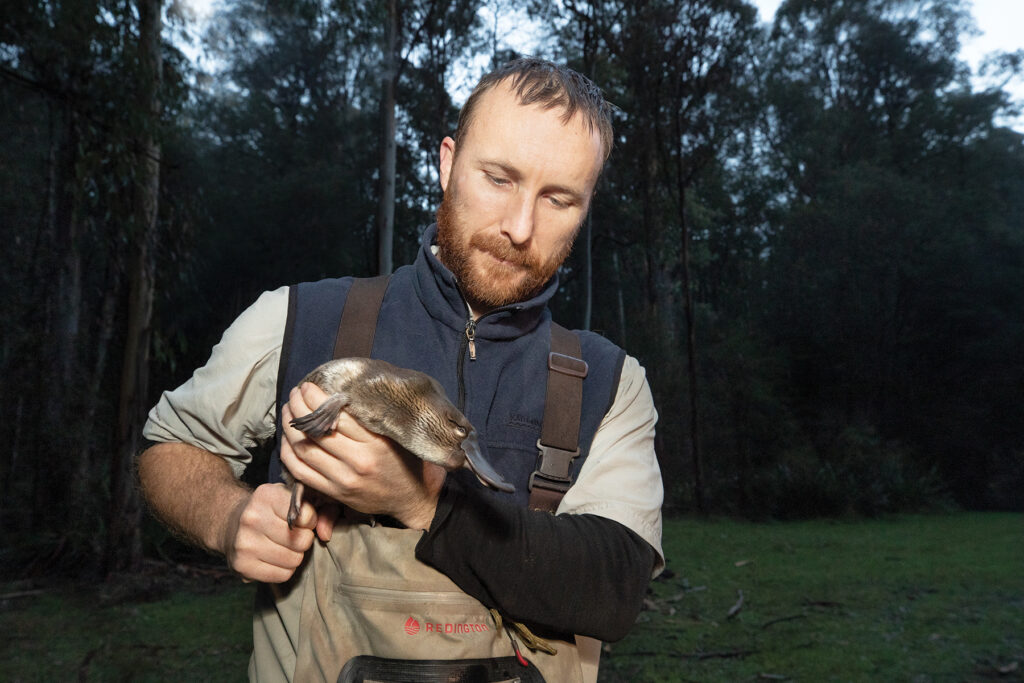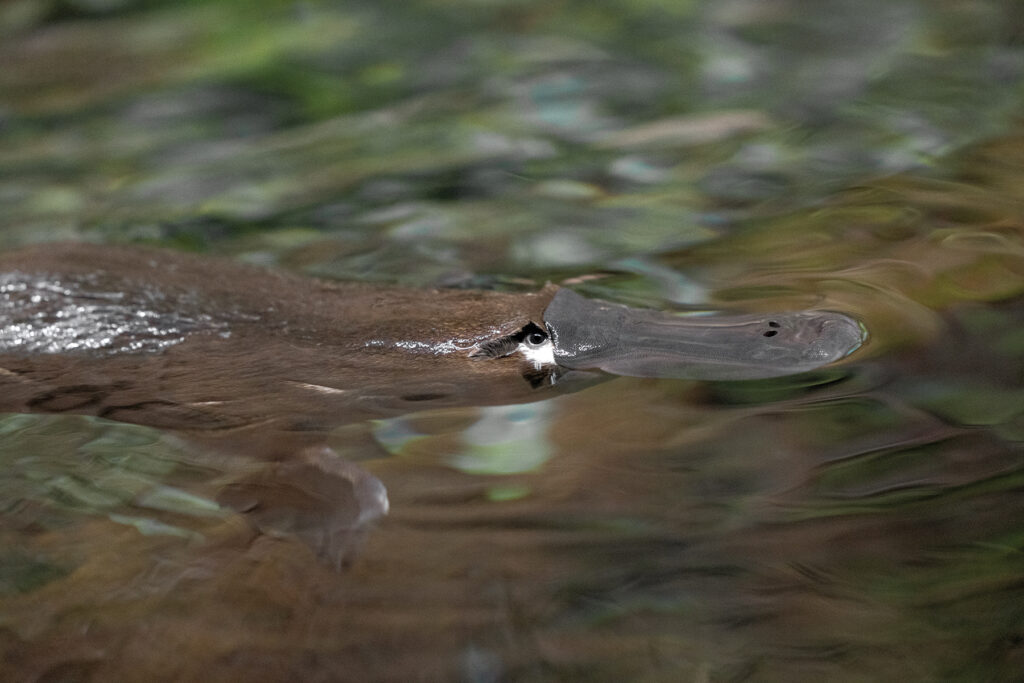
Josh Griffiths is a platypus ecologist at Cesar Australia;
Emily McColl-Gausden is a Ph.D. candidate at the University of Melbourne.
Are Platypuses Becoming an Endangered Species?
As adaptable as it is unique, the platypus Ornithorhynchus anatinus is an iconic, semi-aquatic Australian mammal. Endemic to eastern Australia, this fascinating monotreme can inhabit a variety of freshwater systems (creeks, rivers, lakes, and even artificial ponds) and is able to tolerate diverse environmental conditions. Their flexibility extends to their diet, which includes primarily aquatic macroinvertebrates. And while platypuses may be quite at home in the water, this dependence on aquatic ecosystems can leave them vulnerable to a range of natural and anthropogenic (human-made) threats that can degrade their habitat. There are several challenges that wildlife conservation organizations are working to meet.
An In-Depth Study
Concerns facing platypuses and their watery home include drought and altered flow from water diversion and extraction; as well as changes to the surrounding catchment area due to agriculture or urbanization, removal of riparian vegetation, and habitat fragmentation. Poor water quality, as well as predation from invasive predators and entanglement in rubbish and fishing equipment, can also threaten platypuses. Climate change and human population growth are likely to exacerbate these threats.
Until recently, there was little concern over the conservation status of platypuses, largely because their overall distribution did not appear to have changed significantly since European settlement of Australia (unlike many small Australian mammals that have suffered extinctions or dramatic range declines). The problem was that within this broad geographic distribution covering much of eastern Australia, ecologists had very little idea of population numbers or trajectories at either a local or landscape scale. This is largely because platypuses are difficult to monitor in native habitats due to their aquatic and mostly nocturnal lifestyle, high mobility, and dispersed distribution. Live-trapping surveys are time- and labor-intensive, costly, and severely limited by environmental conditions, and can be stressful for a platypus. Observational surveys can be difficult to implement in remote areas or where visibility is limited. They are typically biased toward population centers and have moderate risk of false positives due to misidentification, typically with the native rakali Hydromys chrysogaster, also known as a water rat.

One of the authors, platypus ecologist Josh Griffiths, prepares to release a platypus back to its habitat during a live-trapping population survey.
By necessity, observations need to occur during daylight, but that is when platypuses are least active. Both techniques can have poor sensitivity to detect platypuses at low abundance and are difficult to systematically implement over the large spatial scales required to understand the status of wildlife like the platypus, which is widely and relatively sparsely distributed across a vast area.
DNA Detectives
Despite such difficulties, there has been mounting evidence of localized population declines over the past few decades, mostly in agricultural or urban areas. Challenges in assessing platypus abundance and occurrence, as well as the lack of long-term studies and systematic historical data, have hampered attempts to assess the impacts of various threatening processes at a local or landscape scale or to rigorously assess their conservation status.
More recently, non-invasive sampling techniques have been developed that detect species-specific DNA from environmental samples such as water or soil. Comparisons with traditional sampling methods indicate that environmental DNA (eDNA) methods are superior in terms of sensitivity and cost efficiency, particularly for scarce, elusive, or cryptic species. We adapted and assessed eDNA methods to detect platypuses and found high sensitivity to detect the species if present, even at low densities. In collaboration with San Diego Zoo Wildlife Alliance (SDZWA), we applied eDNA techniques in the largest-ever survey of platypuses to try to quantify the impacts of various threats and better understand their conservation status.

The project focused on southeastern Australia, as these populations were considered to be most threatened. This area has been particularly devastated by the decade-long “Millennium Drought” and is expected to be further impacted by climate change. Using a random stratified design, we selected about 800 survey sites across more than approximately 200,000 square miles, based on vegetation, which varied from native vegetation to urban areas. The project team visited 777 sites and collected replicate water samples from 504 sites during 2018 through 2021, and recorded a number of site variables assumed to be important for platypuses or their macroinvertebrate prey (such as bank erosion, in-stream complexity, and riparian vegetation). Back in the laboratory, the team screened samples for platypus DNA using a species-specific genetic probe. Hierarchical site-occupancy models were used to analyze the data, estimate occupancy and detection probabilities, and quantify the impacts of various threats at various spatial scales, from site- to landscape-level.
The COVID-19 pandemic created some significant challenges for the team to navigate over the last couple of years, including lockdowns, border closures, travel restrictions, and even sourcing laboratory consumables. In addition, extensive bushfires ripped through southeastern Australia during the summer of 2019 and 2020, encompassing a large part of our study area. These “Black Summer” bushfires were devastating for the people and wildlife affected. However, they presented a unique opportunity for us to revisit a selection of survey sites to try to understand the impacts of bushfires on platypuses as, for the first time, we had systematic pre-fire data to compare with.
Looking Ahead
The data analysis is still being finalized for a Ph.D. thesis and publication, but some findings are taking shape. For instance, at the landscape level, platypuses were much less likely to occur in areas of intense agriculture or shrub or grasslands, and in rivers with extended cease-to-flow events. They were more likely to occur at sites with higher runoff, a proxy for water availability in the system. Additionally, at the site level, platypuses were more likely to occur where banks suitable for burrowing were present. And, thankfully, platypuses appeared to be somewhat buffered from severe impacts from the bushfires; although there is evidence for more localized impacts.
Using data from eDNA techniques, our findings will help land and waterways managers to develop better strategies for protecting platypuses, such as riparian rehabilitation programs in agricultural zones, and the use of environmental flows to minimize zero-flow days.
Discover more about what your support makes possible for Australia's unique wildlife through our Australian Forest Conservation Hub.




